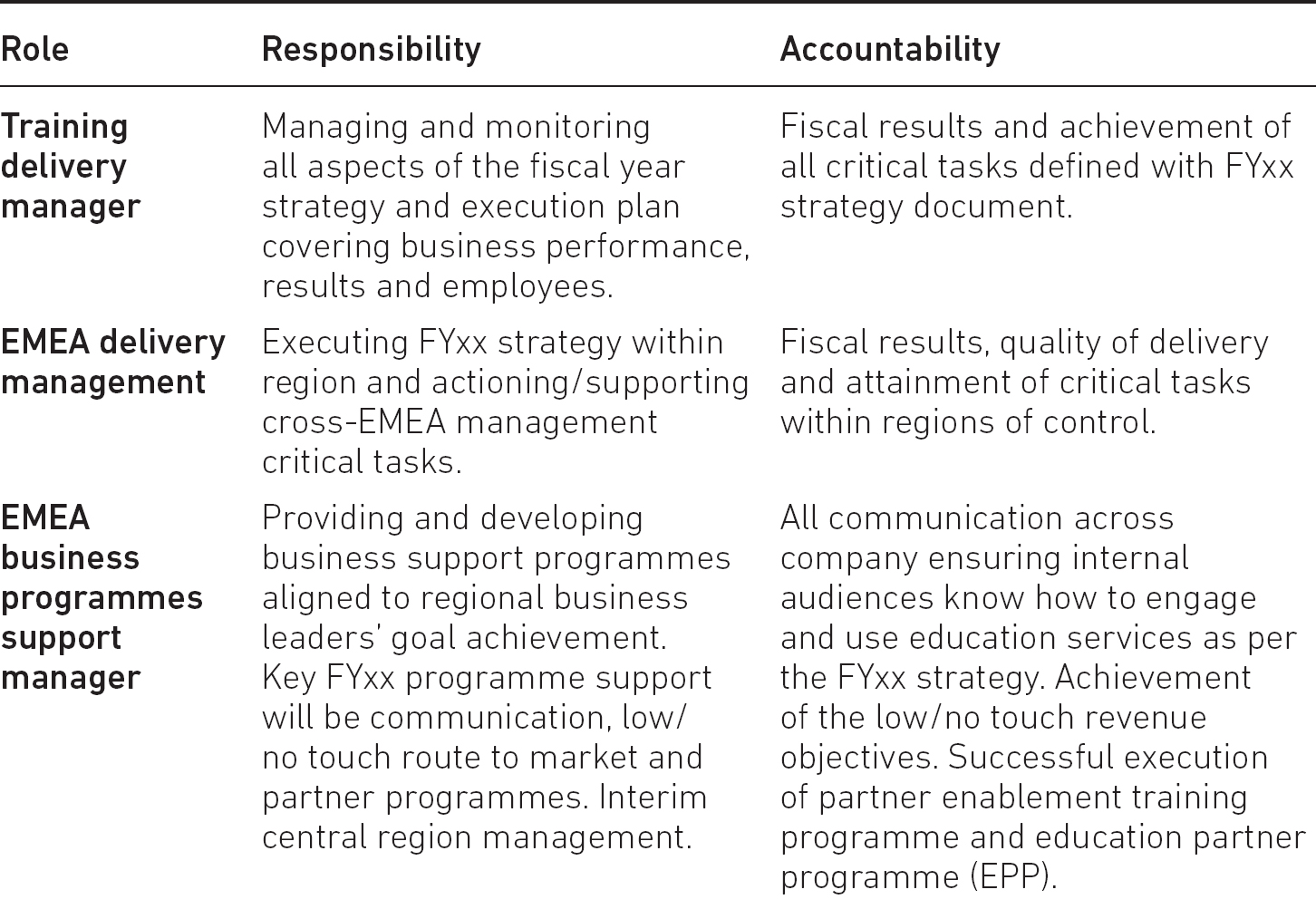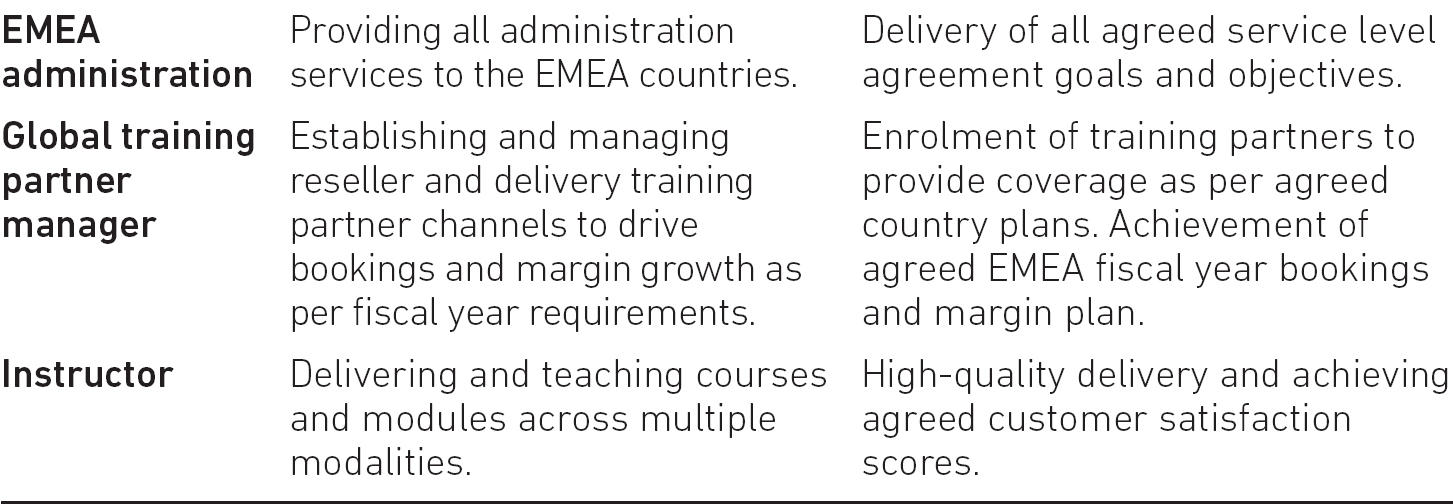Chapter 2 concluded with a case study: the strategy to execution model. For clarity purposes, the stages associated with the development of the executable plan, with the exception of the critical tasks and interdependencies, were not described. In this appendix the details for the missing steps are covered as follows:
- talent;
- formal organisation;
- climate and culture.
The talent requirements for the training team and partner community needed to support the critical tasks are shown in Table A1.

The formal organisation required to support the business design requirements is shown in Figure A1. The organisation has three main departments to minimise management overhead, with a focus on training delivery, product management and training partner management. Through the use of service level agreements, finance, sales, accounting, legal, systems and infrastructure, and marketing are provided as part of a shared service function to assist in minimising staffing costs and overheads.
Further cost efficiencies are achieved by centralising training delivery with instructors and administration coming under local control for the Americas and EMEA regions. Streamlining training offering lifecycle management under the training product management team enables curriculum development, certification and publications to operate more efficiently.
Training partner management comes under centralised control and operates as a separate P&L from that of training delivery to ensure focus of attention on critical task requirements.
The final stage of climate and culture is equally important as the others in terms of steering employees towards the achievement of training group success. Via active engagement and involvement at all levels, the training group will focus on:
- discussing, understanding and defining what it is passionate about;
- discussing, recognising and agreeing what it can be the best in the world at;
- discussing and understanding what is driving the economic engine and how to control it, not the other way around;
- discussing and agreeing what they value and why;
- discussing and understanding how, individually and as a team, they are progressing towards financial, personal, career and teamwork goals;
- recognising success and their part in it.
At the end of each quarter, all members of the team will reflect on all six points in a candid and positive manner with a view to building a culture and climate for success.


